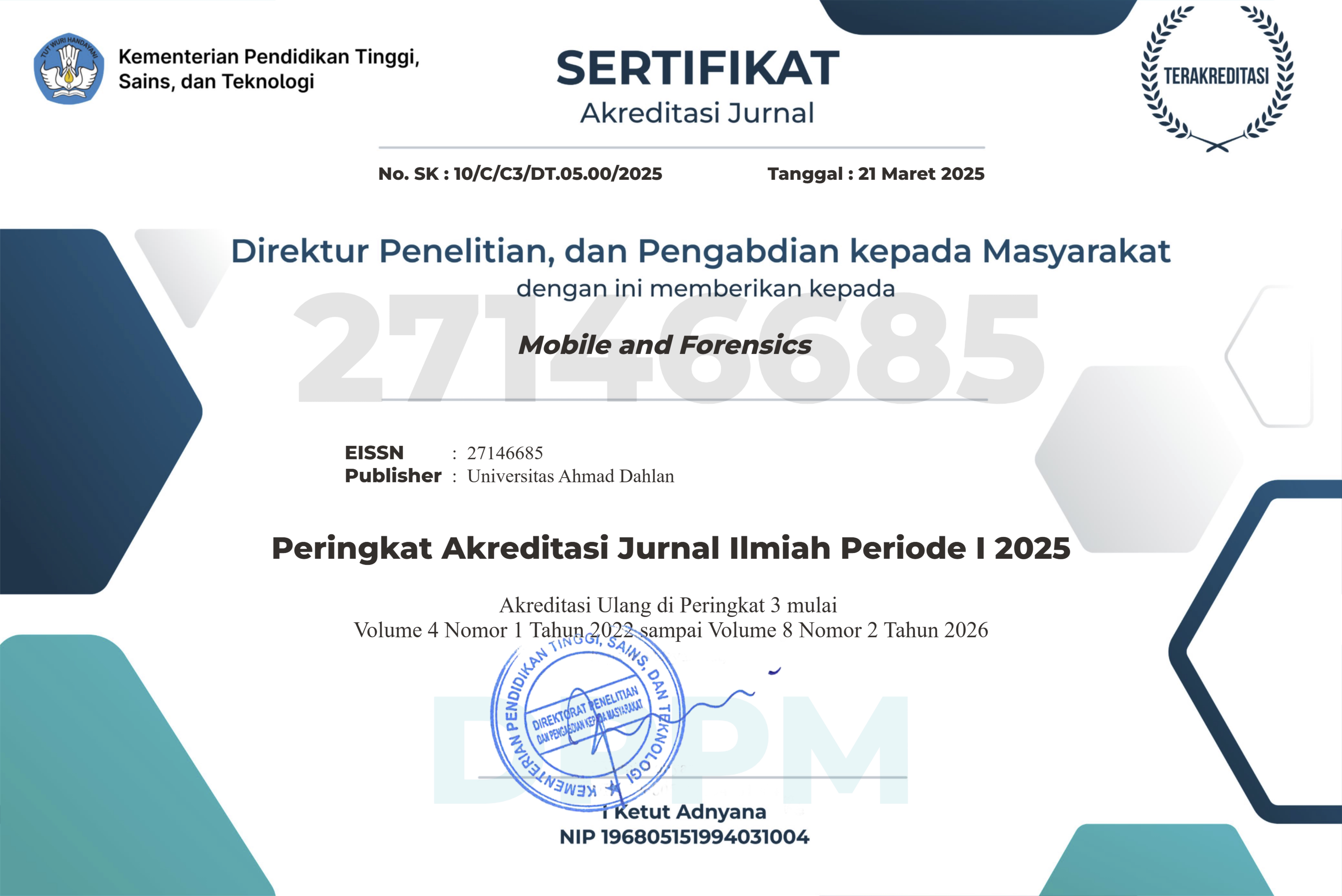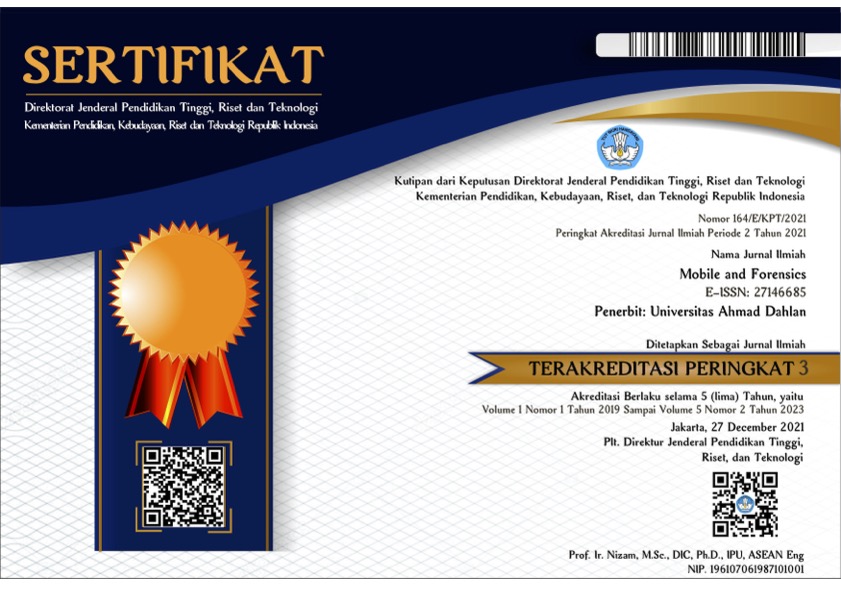Design and Analysis of 5G Telemedicine Systems
DOI:
https://doi.org/10.12928/mf.v3i2.5390Keywords:
5G, Telemedicine, Wireless Communication, Technology, HealthAbstract
Recently, remote health care is one of the serious issues to look after. Due to lack of technological advancement, the services in heath have been degrading. This work details about design of 5G Wireless communication systems and further it is implemented in telemedicine systems. As 5G deals with FBMC as a selected waveform and this has been chosen because it has the higher spectrum allocation capability and better interference rejection as compared to that of other multicarrier techniques. The main motivation to jump into 5G technologies is because of more connected devices and it can allocate the underutilized spectrum to the secondary user verifying the certain policies. As these telemedicine systems is one of the most needed technologies in health care especially in remote places and 5G systems has higher data rate where the health specialist can receive the patient status at less time and act as per the condition. This work details about transmission of patient’s vital sign, image and video and analysis which are most essential components in future Telemedicine systems.
References
M. Mullen-Fortino, K. L. Rising, J. Duckworth, V. Gwynn, F. D. Sites, and J. E. Hollander, “Presurgical Assessment Using Telemedicine Technology: Impact on Efficiency, Effectiveness, and Patient Experience of Care,” Telemed. E-Health, vol. 25, no. 2, pp. 137–142, Feb. 2019, doi: 10.1089/tmj.2017.0133.
F. Seker et al., “Clinical results of a new concept of neurothrombectomy coverage at a remote hospital—‘drive the doctor,’” Int. J. Stroke, vol. 13, no. 7, pp. 696–699, Oct. 2018, doi: 10.1177/1747493018765267.
D. Li, “5G and intelligence medicine—how the next generation of wireless technology will reconstruct healthcare?,” Precis. Clin. Med., vol. 2, no. 4, pp. 205–208, Dec. 2019, doi: 10.1093/pcmedi/pbz020.
H. N. Parajuli, H. Shams, L. G. Gonzalez, E. Udvary, C. Renaud, and J. Mitchell, “Experimental demonstration of multi-Gbps multi sub-bands FBMC transmission in mm-wave radio over a fiber system,” Opt. Express, vol. 26, no. 6, p. 7306, Mar. 2018, doi: 10.1364/OE.26.007306.
A. Kumar and H. Rathore, “Modified DSLM Technique for PAPR Reduction in FBMC System,” Radioelectron. Commun. Syst., vol. 62, no. 8, pp. 416–421, Aug. 2019, doi: 10.3103/S0735272719080053.
Y. Zhang, G. Chen, H. Du, X. Yuan, M. Kadoch, and M. Cheriet, “Real-Time Remote Health Monitoring System Driven by 5G MEC-IoT,” Electronics, vol. 9, no. 11, p. 1753, Oct. 2020, doi: 10.3390/electronics9111753.
D. H. Jin, C. C. Hu, and B. Liu, “Improved sinterability and temperature stability in Zn2+/Ti4+-co-substituted CaAl2O4 ceramics and their 5G antenna applications,” J. Mater. Sci. Mater. Electron., vol. 32, no. 13, pp. 18205–18211, Jul. 2021, doi: 10.1007/s10854-021-06362-y.
A. Jacobs, A. E. Schutte, C. Ricci, and M. Pieters, “Plasminogen activator inhibitor-1 activity and the 4G/5G polymorphism are prospectively associated with blood pressure and hypertension status,” J. Hypertens., vol. 37, no. 12, pp. 2361–2370, Dec. 2019, doi: 10.1097/HJH.0000000000002204.
K. Venkatachalam, P. Prabu, A. S. Alluhaidan, S. Hubálovský, and P. Trojovský, “Deep Belief Neural Network for 5G Diabetes Monitoring in Big Data on Edge IoT,” Mob. Netw. Appl., Jan. 2022, doi: 10.1007/s11036-021-01861-y.
A. M. Lacy et al., “5G-assisted telementored surgery,” Br. J. Surg., vol. 106, no. 12, pp. 1576–1579, Oct. 2019, doi: 10.1002/bjs.11364.
M. M. M. Ali and A. Sebak, “Compact Printed Ridge Gap Waveguide Crossover for Future 5G Wireless Communication System,” IEEE Microw. Wirel. Compon. Lett., vol. 28, no. 7, pp. 549–551, Jul. 2018, doi: 10.1109/LMWC.2018.2835149.
C. Lele, P. Siohan, and R. Legouable, “2 dB Better Than CP-OFDM with OFDM/OQAM for Preamble-Based Channel Estimation,” in 2008 IEEE International Conference on Communications, Beijing, China, 2008, pp. 1302–1306. doi: 10.1109/ICC.2008.253.
G. Nikandish, R. B. Staszewski, and A. Zhu, “Breaking the Bandwidth Limit: A Review of Broadband Doherty Power Amplifier Design for 5G,” IEEE Microw. Mag., vol. 21, no. 4, pp. 57–75, Apr. 2020, doi: 10.1109/MMM.2019.2963607.
B. Khan and F. J. Velez, “Multicarrier Waveform Candidates for Beyond 5G,” in 2020 12th International Symposium on Communication Systems, Networks and Digital Signal Processing (CSNDSP), Porto, Portugal, Jul. 2020, pp. 1–6. doi: 10.1109/CSNDSP49049.2020.9249568.
Y. Cui, Z. Zhao, and H. Zhang, “An Efficient Filter Banks Based Multicarrier System in Cognitive Radio Networks,” vol. 19, no. 4, p. 9, 2010.
B. G. Kim, S. H. Bae, H. Kim, and Y. C. Chung, “RoF-Based Mobile Fronthaul Networks Implemented by Using DML and EML for 5G Wireless Communication Systems,” J. Light. Technol., vol. 36, no. 14, pp. 2874–2881, Jul. 2018, doi: 10.1109/JLT.2018.2808294.
B. Farhang-Boroujeny, “Filter Bank Multicarrier Modulation: A Waveform Candidate for 5G and Beyond,” Adv. Electr. Eng., vol. 2014, pp. 1–25, Dec. 2014, doi: 10.1155/2014/482805.
H. Jamal and D. W. Matolak, “Dual-Polarization FBMC for Improved Performance in Wireless Communication Systems,” IEEE Trans. Veh. Technol., vol. 68, no. 1, pp. 349–358, Jan. 2019, doi: 10.1109/TVT.2018.2879573.
M. AlTarayrah and Q. A. Al-Haija, “Adaptive Channel Equalization for FBMC Based on Variable Length Step Size and Mean-Squared Error,” Int. J. Digit. Inf. Wirel. Commun., p. 12, 2013.
T. Ihalainen, T. H. Stitz, and M. Renfors, “Efficient Per-Carrier Channel Equalizer for Filter Bank Based Multicarrier Systems,” in 2005 IEEE International Symposium on Circuits and Systems, Kobe, Japan, 2005, pp. 3175–3178. doi: 10.1109/ISCAS.2005.1465302.
S. Baig, H. Muhammad Asif, T. Umer, S. Mumtaz, M. Shafiq, and J.-G. Choi, “High Data Rate Discrete Wavelet Transform-Based PLC-VLC Design for 5G Communication Systems,” IEEE Access, vol. 6, pp. 52490–52499, 2018, doi: 10.1109/ACCESS.2018.2870138.
M. V. M. Figueredo and J. S. Dias, “Mobile Telemedicine System for Home Care and Patient Monitoring,” in The 26th Annual International Conference of the IEEE Engineering in Medicine and Biology Society, San Francisco, CA, USA, 2004, vol. 4, pp. 3387–3390. doi: 10.1109/IEMBS.2004.1403951.
D. Jingwei and J. Wenwen, “Design of Digital Filter on ECG Signal Processing,” in 2015 Fifth International Conference on Instrumentation and Measurement, Computer, Communication and Control (IMCCC), Qinhuangdao, China, Sep. 2015, pp. 1272–1275. doi: 10.1109/IMCCC.2015.273.
C. Sha, R. Wang, H. Huang, and L. Sun, “A type of healthcare system based on intelligent wireless sensor networks,” J. China Univ. Posts Telecommun., vol. 17, pp. 30–39, Jul. 2010, doi: 10.1016/S1005-8885(09)60611-7.
M. Abo-Zahhad, S. M. Ahmed, and O. Elnahas, “A Wireless Emergency Telemedicine System for Patients Monitoring and Diagnosis,” Int. J. Telemed. Appl., vol. 2014, pp. 1–11, 2014, doi: 10.1155/2014/380787.
V. Oleshchuk and R. Fensli, “Remote Patient Monitoring Within a Future 5G Infrastructure,” Wirel. Pers. Commun., vol. 57, no. 3, pp. 431–439, Apr. 2011, doi: 10.1007/s11277-010-0078-5.

Downloads
Published
Issue
Section
License
Copyright (c) 2021 Lalit Chettri, Rabindranath Bera

This work is licensed under a Creative Commons Attribution-ShareAlike 4.0 International License.
Start from 2019 issues, authors who publish with JURNAL MOBILE AND FORENSICS agree to the following terms:
- Authors retain copyright and grant the journal right of first publication with the work simultaneously licensed under a Creative Commons Attribution License (CC BY-SA 4.0) that allows others to share the work with an acknowledgment of the work's authorship and initial publication in this journal.
- Authors are able to enter into separate, additional contractual arrangements for the non-exclusive distribution of the journal's published version of the work (e.g., post it to an institutional repository or publish it in a book), with an acknowledgment of its initial publication in this journal.
- Authors are permitted and encouraged to post their work online (e.g., in institutional repositories or on their website) prior to and during the submission process, as it can lead to productive exchanges, as well as earlier and greater citation of published work.

This work is licensed under a Creative Commons Attribution-ShareAlike 4.0 International License.












 Mobile and Forensics (MF)
Mobile and Forensics (MF)